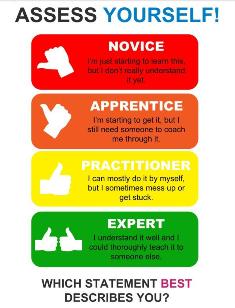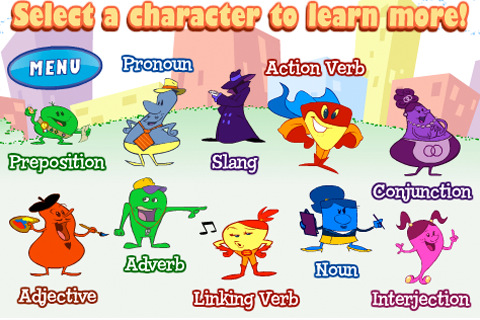We are just about to launch Triptico Plus to the schools teaching community. Despite just a handful of teachers being formally introduced to Triptico (note the lack of plus), I am not surprised by how many staff have ushered in the new networked Triptico Plus version complete with ‘load from cloud’ option and a handful of extra app.
The release of Triptico is just one of our pedagogical efforts at The Academy to narrow the gap between our girls and boys achievement. These 23 strategies are primarily pedagogical, it is not that I am ignoring individual, organisational, socio-cultural stratgies, it is just Triptico is very much about getting the students engaged. So, to support our lead teacher on this agenda, I wrote ’23 Strategies for raising boys’ achievement with and without Triptico.’
- Use an unexpected stimulus – whether this is an image, facts (Coca-cola is really green), part of an image, a film clip, a piece of music or a prop, allow students an opportunity to reflect upon the stimulus and then to share their ideas. This could also be used as the start of a ‘community of enquiry’ or P4C (philosophy for children) session. Triptico Image Spinners, Match Maker or Find Ten.
- Content – Is this current, contextual, relevant, exciting and related to real-life? (If in doubt, ask the students if they have some great ideas for topics, resources and approaches.) Once you have the ideas either Triptico Class Count or Task Generator the activities.
- Research shows that the single biggest cause of academic underachievement is lack of vocabulary – any investment in vocabulary building is time well spent. Think Triptico Magnets, Cardboard, Word Mix, Bing, Cardboard or Text Spinner. Combine Text Spinner with Student Selector. Word games such as taboo, speed quizzing, “last man standing” and “odd one out,” are also good engagers or plenaries.
- Challenging the ‘I’m not trying that hard” student responses – “That’s a grade D word, can you think of a B grade example?” Reward great answers with “Back of the net… that would be a B grade answer.”
- Devil’s advocate or provocative statements – prod their morals sensibilities. Giving students something which elicits a gut reaction. Be contentious. This encourages deep thinking and originality. Triptico Task Generator can be used to defer direct responsibility for the prod.
- “Tap into the talent in the room” – instead of the teacher providing input in the early stages, begin by drawing out what students already know by getting them to seek out information from each other, trio discussions, followed by Triptico Think Link or Order Sorter. Use Triptico to dig under the connections or ordering.
- Use competition – Triptico Timers, Score Tapper, What’s the question and Bingo. Use the Student selector to create a semi-final and final competition. Poetry or mental maths battles. Use Triptico Student Group for teams and group leaders.
- Creativity through movement – revise the circulatory system by re-enacting it. Students to take the role of the vena cava, arteries and to walk the route of the circulatory system.
- ‘Talk timer for teachers’ – setting the timer and state “I have 10 mins to introduce this topic, pass attention, and then it’s over to you”. Triptico Timers. Set a timer – ‘You only have 4 mins left. I take you are discussing the question as you are finished… No? Need help? No? Crack on then.’
- ‘The week long lesson’ e.g. doing something in more detail to allow different pedagogies to develop. Track the development in Triptico Think Link.
- Students taking responsibility for designing their own learning -“If this is our objective, what suggestions do you have for how we might learn it?” Order the suggestions in Triptico Order Sorter.
- ‘Yes / No – sorry I don’t know… you might know?’ – get the students talking, thinking, asking, doing, more than the teacher. Only provide ‘yes/no’ answers, pass it over to the class, and pass it on again. Bounce it back. Reward and thank.
- Mini-Books in the shape of a topic. Three small workbooks instead of one big workbook. Use the photocopier booklet mode. Reward progress, by rewarding the completion of minibooks.
- Shrink it – “Who can get this topic into the smallest number of words?” Triptico Magnets and Tweet it, Facebook status update or BBM it. Let students use their phones if you are comfortable with that.
- ‘Getting Unstuck’ – instead of stepping in and providing answers to difficult questions, model ways to get “unstuck”. FAIL – fist attempt in learning. No can’t, haven’t yet. (Know your famous (successful) failures; Walt Disney, John Grisham, Steve Jobs and so on).
- Is a written response is the most appropriate response? More creative responses could include a drawing, a model, a discussion, an action, a mind-map or something completely different. Allowing the students to decide for themselves on an appropriate form is very motivating or let Triptico Task Generator choose for them.
- Teaching through metaphor – “How is an atom like a grain of sand?” Teaching using metaphor encourages creative thought in order to move teachers and students away from expected to unexpected solutions to problems.
- SAM Learning – full of engaging ready made materials and ideas.
- Kagan structures for co-operative learning – Use Triptico Student Group for teams and group leaders. All very powerful for developing both, communication and cooperative skills.
- Placemat – A placemat with key info, vocabulary and getting unstuck strategies. Double sided.
- Snowballs – Students write their question on a piece of paper before scrunching it up and throwing it to the front of the class. Teacher asks the question without knowing you asked it.
- Continuums – Add student names as Triptico Magnets to a sortable background, quads or continuums work well. Students move their name to record their answer, before the teacher leads the enquiry. “James, interesting. Why did you say you ‘Strongly disagree?’
- Food.
[qr_code_display]



Useful strategies for closing the gender gap – looking forward to trying them in class with a view to sharing.
Great, pleased they may prove successful. Any feedback is greatfeully received.